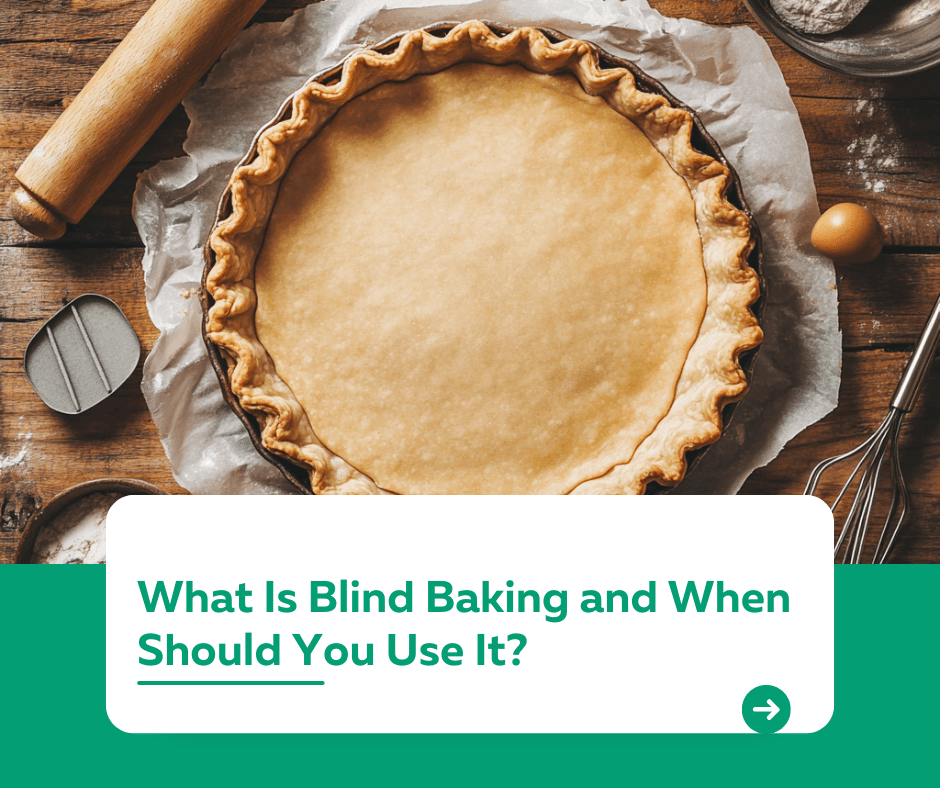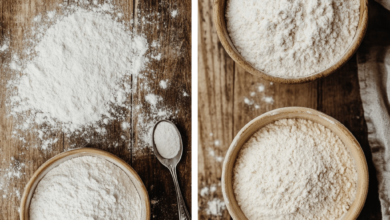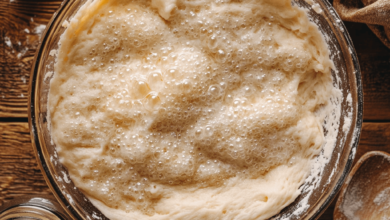What Is Blind Baking and When Should You Use It?

Introduction
“What is blind baking, and why is it essential in certain recipes?”
Blind baking is a technique that involves pre-baking a pie or tart crust before adding the filling. It’s a crucial step in recipes that use unbaked fillings or require a crisp crust. This guide explains what blind baking is, why it’s important, and how to do it properly for perfect pies and tarts every time.
1. What Is Blind Baking?
Blind baking is the process of baking a pie or tart crust without any filling.
- How It Works:
- The crust is pre-baked partially or fully, depending on the recipe.
- Weights are often used to prevent the crust from puffing up or shrinking during baking.
- Why It’s Done:
- To ensure the crust is cooked through and doesn’t get soggy from wet fillings.
- To give the crust a head start in recipes with shorter baking times for fillings.
2. When Should You Blind Bake?
Blind baking is essential in certain situations:
- Unbaked Fillings:
- For pies like cream pies or no-bake cheesecakes, the filling doesn’t go into the oven, so the crust needs to be fully baked beforehand.
- Liquid or Wet Fillings:
- Custard-based pies (e.g., quiche) or fruit pies can make the crust soggy if not pre-baked.
- Crisp Textures:
- Tarts and pies that require a crispy crust benefit from blind baking.
3. How to Blind Bake a Crust
Follow these steps for perfect blind baking:
1️⃣ Prepare the Dough
- Roll out your pie dough and fit it into the pie or tart pan.
- Trim the edges and chill the crust in the refrigerator for at least 30 minutes.
2️⃣ Line the Crust
- Place parchment paper or aluminum foil over the crust.
- Fill with pie weights, dried beans, or uncooked rice to keep the crust from puffing up.
3️⃣ Bake the Crust
- Preheat the oven to 375°F (190°C).
- Bake the crust for 15–20 minutes with weights.
- Remove the weights and parchment, then bake for another 5–10 minutes until golden.
4️⃣ Cool Before Filling
- Let the crust cool completely before adding your filling.
4. Tips for Successful Blind Baking
- Use Weights: Always use pie weights or dried beans to prevent bubbling.
- Chill the Dough: Cold dough holds its shape better during baking.
- Watch the Edges: Cover the edges with foil or a pie shield to prevent over-browning.
- Poke Holes Sparingly: Dock the crust with a fork if you’re not using weights, but don’t overdo it.
Conclusion
Blind baking ensures your crust is perfectly crisp and ready to hold any filling, from rich custards to creamy pies. By mastering this technique, you’ll elevate your baking skills and create flawless pies and tarts every time. Whether it’s a quiche or a no-bake cheesecake, blind baking is the key to a professional-quality crust.
For more baking techniques and tips, visit our Kuestion.com.




